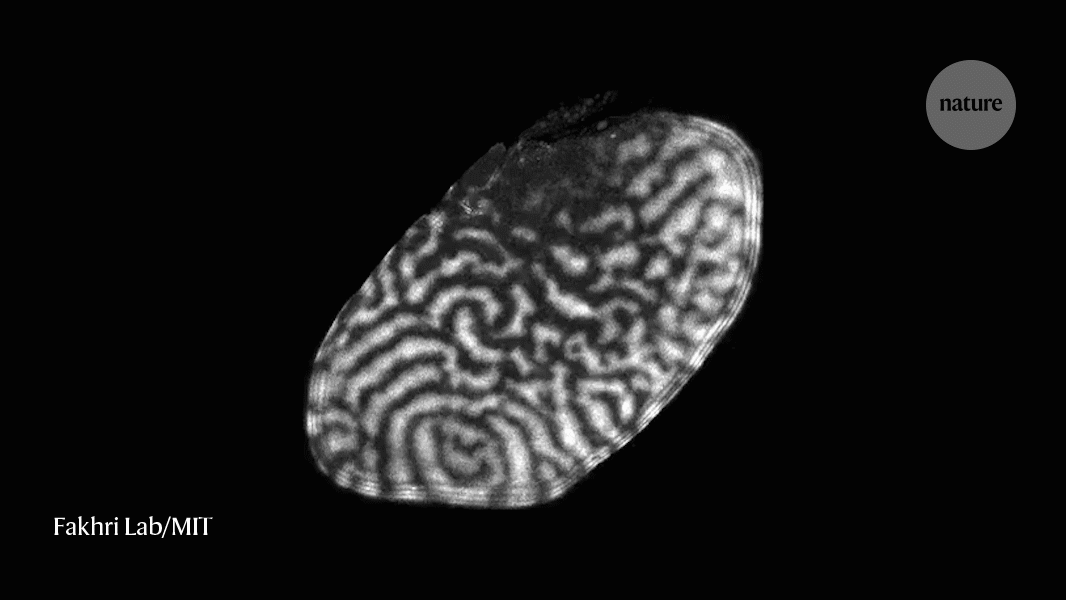Protein attachment to the membrane of a starfish egg cell occurs in rippling waves (video is roughly 100 times faster than actual speed). Credit: Fakhri Lab/MIT
Physics
Some cellular proteins move across a cell’s membrane in rippling waves, displaying patterns of turbulence that resemble those seen throughout the physical world.
When bound to a cell membrane, the signalling protein Rho-GTP plays a part in the multistep process that leads a cell to divide. Proteins similar to Rho-GTP are found in a vast number of organisms, including vertebrates.
Nikta Fakhri at the Massachusetts Institute of Technology in Cambridge and her colleagues studied the concentrations of Rho-GTP on the cell membrane of a species of starfish called the bat star (Patiria miniata). The researchers used a fluorescent protein to label Rho-GTP in P. miniata egg cells and then made videos of the eggs under a microscope.
The results showed that the protein’s concentration changed in waves that propagated across the membrane. Swirling vortices of two distinct types appeared in the waves in pairs, interacting in much the same way as particles of opposite electrical charge.
Similar patterns are seen across the physical world, in phenomena ranging from atmospheric dynamics to quantum systems, the authors write.

